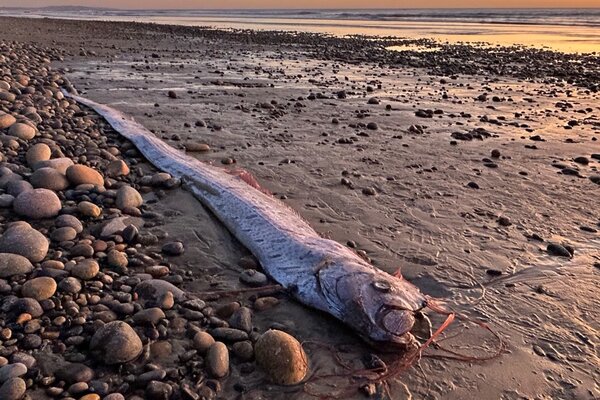Unveiling the Mysteries of the Oarfish

Introduction
The oarfish is one of the most enigmatic creatures of the ocean, known for its astonishing appearance and length, which can exceed 36 feet. Recent sightings off the Indian coast have sparked interest and intrigue in this deep-sea giant, drawing attention to its significance within marine ecosystems. Understanding the oarfish not only piques our curiosity about oceanic life but also highlights the implications of such discoveries on marine science and conservation efforts.
Recent Sightings
In October 2023, fishermen off the coast of Kerala reported an unusual finding—a massive oarfish washed ashore. This sighting aligns with a pattern where oarfish are often observed near coastal areas during certain seasonal shifts. Experts believe that such events usually precede seismic activity, making the oarfish a critical subject of study in relation to underwater geological phenomena.
Physical Characteristics
The oarfish (Regalecus glesne), identified by its elongated body and distinctive dorsal fin that resembles an oar, dwells in deep waters—typically at depths of 200 meters to 1,000 meters. Its metallic sheen and ribbon-like shape make it a captivating sight for scientists and ocean enthusiasts alike. With little research conducted on these elusive creatures due to their habitat, each sighting offers valuable insights into their behavior and ecological roles.
Ecological Importance
As part of the pelagic fish community, the oarfish plays a crucial role in the food chain. Its diet primarily consists of small crustaceans and jellyfish, and it is believed to be both a predator and prey within its underwater ecosystem. The ecological impact of the oarfish extends beyond its immediate environment, as studying their population can help predict changes in ocean health and biodiversity.
The Mystery and Future Research
Despite their occasional sightings, much remains unknown about the oarfish’s life cycle, behavior, and habitat preferences. The recent reports have emphasized the need for further research into these mysterious creatures. Marine biologists are calling for dedicated expeditions to study their natural habitats and gather data that could contribute to broader marine conservation efforts.
Conclusion
The recent appearance of the oarfish off the Indian coast highlights not only the wonders of marine life but also crucial aspects of marine conservation. As we strive to understand this remarkable creature, it reminds us of the vast unexplored territories of our oceans. Increased public interest and scientific inquiry may inspire urgent actions to protect our marine ecosystems, ensuring that we foster a balanced environment for both marine species and human societies.









